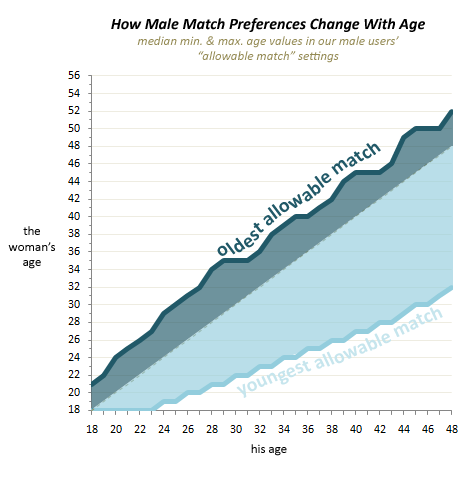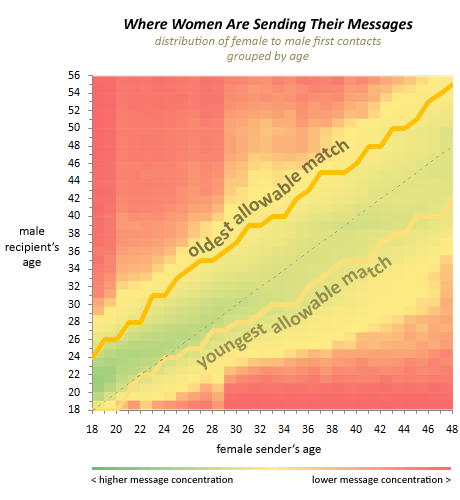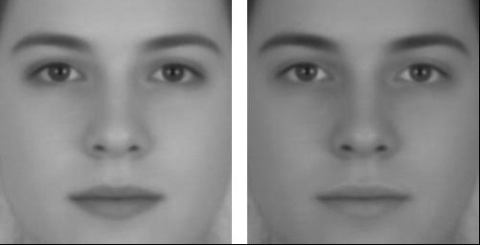OkCupid is a large online dating website. They therefore have a lot of data relating to interesting subjects.
Their blog, OkTrends, is dedicated to showing statistical analyses of various parts of their dataset. It’s fascinating reading and I highly recommend it.
The latest post is about the merits of older women and includes a lot of interesting graphs.
This graph shows the oldest and youngest women that men claim they are interested in as they get older.
- Men are only ever willing to consider women slightly older than themselves
- As they grow older men are interested in relatively younger and younger women

This graph, by contrast, shows the ages of women that men actually try to chat up on the website.
- Men are actually sending messages to women much younger than their supposed youngest acceptable
- By far the most messages are going to very young women

This is the same for women.
- Women are also interested in men younger than they say they are
- Women are less age sensitive than men

Even more interesting are the vertical color changes. For example, as soon as women turn 20 it seems that they suddenly feel comfortable contacting much older men.
The same thing happens again when women turn 29. At 28 women send plenty of messages to young men (19 or 20) and almost none to men over 42.
But when they turn 29 women suddenly send almost no messages to men under 22 but start sending many more messages to men in their 40’s and early 50’s.
The benefits of older women
The blog then goes on to sing the praises of older women.
Older women are cheekier when it comes to sex (several more graphs on the site):

Older women are also more comfortable with themselves (again more graphs on the site):
There is a lot more information and many more graphs (including several interactive ones) on the actual blog. I recommend taking a look.


 A while ago I watched a David Attenborough documentary that showed a bushman man running a Kudu to death. It was pretty amazing stuff – by persistently chasing the kudu through the heat of the day he was able to exhaust it to the point of collapse.
A while ago I watched a David Attenborough documentary that showed a bushman man running a Kudu to death. It was pretty amazing stuff – by persistently chasing the kudu through the heat of the day he was able to exhaust it to the point of collapse.